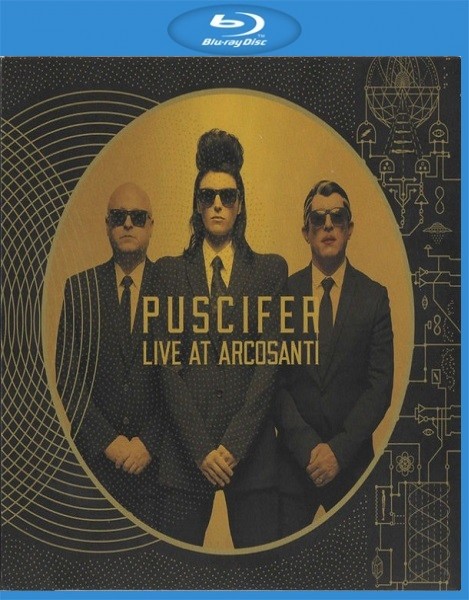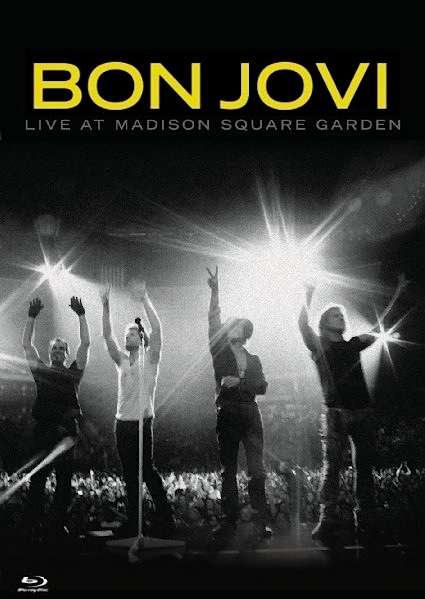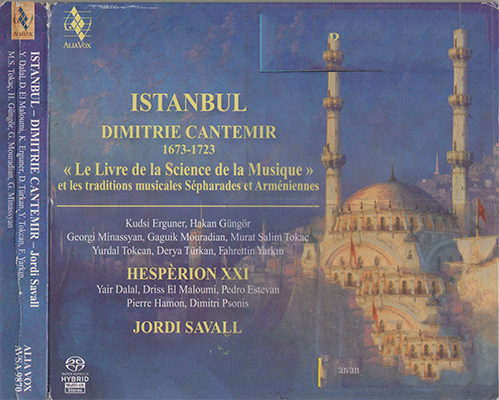![Jordi Savall - Marin Marais; Alcione (2021) [Official Digital Download 24bit/88,2kHz] Download](https://imghd.xyz/images/2023/03/31/zlkkv8ag40mub_600.jpg)
Jordi Savall – Marin Marais; Alcione (2021)
FLAC (tracks) 24 bit/88,2 kHz | Time – 02:54:59 minutes | 3,15 GB | Genre: Classical
Studio Masters, Official Digital Download | Digital Booklet, Front Cover | © Alia Vox
The last great trag’edie en musique or “musical tragedy” of the reign of Louis XIV, Alcyone (Alcione, as the title appears in the 1706 edition) is an all-round spectacle poised between the 17th and 18th centuries. From the 17th century it takes its mythological source, its prologue in praise of the king, its high literary quality and its vocation for spectacle, combining choreography and changes of scenery. In the depth of the emotions experienced by its protagonists, more sensitive than heroic, as well as in the expressiveness of the orchestra which envelopes them in a true sound d’ecor, it ushers in the 18th century.
Structured, like all musical tragedies, in the form of a prologue and five acts, Alcyone was conceived by a successful young librettist, Antoine Houdar de La Motte, and Marin Marais, the most famous violist of his day. The magnificent portrait of Marais by Andr’e Bouys was widely distributed at the time in the form of an engraving. At about the age of fifty, Marais had just been appointed to the prestigious position of batteur de mesure (in modern terms, conductor of the orchestra) of the Royal Academy of Music at the Paris Op’era. Alcyone’s premiere on 18th February, 1706, was a major event, both for the composer and for the institution itself, which since 1673 had been installed in the Th’e`atre du Palais-Royal, at that time the residence of the Duke of Orl’eans, in what is now the Conseil d”Etat or Constitutional Council, and which was roughly the same size as the present-day Salle Favart, home to the Th’e^atre National de l’Op’era Comique.
In 1706, 19 years had passed since the death of the former director of the Op’era, Jean-Baptiste Lully, and the institution found itself in a fragile state. At Versailles, pleasure had long since been ousted by piety. Under the influence of Madame de Maintenon and Bossuet, the monarch was reconciled to Rome before dragging France into the long War of the Spanish Succession. New operas were very rarely staged at court, and they were not necessarily performed in the presence of the king. The fragile financial health of the realm’s foremost public theatre led the Op’era’s privilege-holders to put management in the hands of contract employees: a director and a number of sponsors. The repertory was opened up to Lully’s successors and embraced new lyrical formulas. The op’era-ballet, an entertaining genre represented by the works of Colasse and Campra, had for ten years enjoyed a roaring success.
Louis XIV did not attend the first performance of Alcyone, of which the prologue, as was de rigueur in this official genre, nevertheless extolled his might. Following the custom of the previous fifty years, the king is represented in the guise of Apollo, who triumphs over Pan by singing a hymn to peace: “Amiable Peace, […] / Happy, happy the victor who takes up arms / Only to restore you to the world.” Apollo then orders “a fine pageant” to mark his victory and instructs the muses to repeat the story of the Halcyons, the divinities who watch over the calm of the oceans, which was so vital to the prosperity of the French navy!
The following five acts tell in five tableaux the story of the Halcyons, or rather that of their parents, as taken from Book XI of Ovid’s Metamorphoses, the source of numerous operatic subjects of the period. It revolves around Ceyx, King of Trachis in Thessaly and the son of Phosphorus, the god of light, and Alcyone, the daughter of Aeolus, the god of the winds. Like Alceste, Armide, Dido and many others, the heroine gives her name to the opera, guiding the spectators through a labyrinth of passions which are less political and more intimate in nature than masculine passions. The daughter of a god who rules the elements, she anchors the work in the marine environment, a judicious choice for a show which, in the Baroque period, owed its spectacular qualities (scenic carpentry, stage machinery, set-change mechanisms) to naval engineers and technicians.
The heterogeneous audiences at the Op’era were less reticent than royalty when it came to being won over, from the very first evening, by Jean B’erain’s sets and the remarkable performance conducted by the composer himself. The finest singers and dancers of the company graced the stage, and in the orchestra pit, brightly lit like the rest of the theatre, sat the finest orchestra in Europe. It brought together some forty musicians, most of whom were reputed soloists and even composers in their own right. Inventive, colourful and varied, Marais’s score was all the enthusiastically received in that it included an already popular character from opera, Peleus, the friend and unhappy rival of Ceyx, and at least one folk tune transformed into the sailors’ chorus in Act III. When Alcyone was performed, box- office takings were almost 60% higher than on other evenings.
The revivals of Alcyone at the Op’era bear witness to its enduring popularity, despite the fact that the nature of musical spectacles at that time was undergoing a shift toward dance, variety and entertainment. The 1719, 1730, 1741, 1756, 1757 and 1771 revivals of the work suffered changes and cuts, the brunt of which were borne by the prologue, but the sea storm and, above all, the tempest, remained a must. The storm was included in a revival of Lully’s Alceste in 1707, quoted by Campra in Les F^etes v’enitiennes in 1710… Proof of its huge popularity were the parodies accompanying a number of revivals: Fuzelier wrote L’Ami `a la mode ou parodie d’Alcyone in 1719 for the actors and marionnettes of the Foire Saint-Germain, and in 1741 Romagnesi composed a parodic Alcyone for the Th’e^atre-Italien.
If the storm scene enjoyed particular success, it was because of its ability to depict unbridled nature by “concealing art with art”, something for which Jean-Philippe Rameau also strove – in other words, by using all the resources of serious music to translate the chaos of the elements. With his descriptive symphony, Marais promoted a new vision of his art: henceforth, not only would music be able to portray everything, but it would pull no punches to achieve that goal, incorporating new instruments as well as new ways of playing them. The doors opened to musicians by Marais would never again be closed.
It is this creative freedom and this art of enchantment that is brought to life by Jordi Savall as director of the Concert des Nations, playing on period instruments, and Louise Moaty, assisted by Rapha”elle Boitel, in the first Paris stage production of Alcyone since 1771.
Tracklist:
1-01. Jordi Savall – Alcione, Prologue: Ouverture (03:36)
1-02. Jordi Savall – Alcione, Prologue: “Apollon et le Dieu des bois” (02:01)
1-03. Jordi Savall – Alcione, Prologue: Air des Faunes et des Driades (02:25)
1-04. Jordi Savall – Alcione, Prologue: “Fuyez, fuyez, mortels, fuyez” (02:08)
1-05. Jordi Savall – Alcione, Prologue: Ritournelle: “Aimable paix, c’est toi que célèbrent mes chants!” (01:37)
1-06. Jordi Savall – Alcione, Prologue: “Règne, règne, fille du ciel, mets la discorde aux fers” (03:06)
1-07. Jordi Savall – Alcione, Prologue: Prélude – “A l’éclat de vos chants” (02:00)
1-08. Jordi Savall – Alcione, Prologue: Marche (pour les Bergers et les Bergères) (01:31)
1-09. Jordi Savall – Alcione, Prologue: 1er Menuet (pour les mêmes) – “Le doux Printemps ne paraît point sans Flore” (02:57)
1-10. Jordi Savall – Alcione, Prologue: Bourrée (pour les mêmes) (00:46)
1-11. Jordi Savall – Alcione, Prologue: Premier et deuxième Passepieds (pour les mêmes) (02:03)
1-12. Jordi Savall – Alcione, Prologue: “Qu’un spectacle charmant signale ma victoire” (02:59)
1-13. Jordi Savall – Alcione, Prologue: Entr’acte (Reprise de l’Ouverture) (03:28)
1-14. Jordi Savall – Alcione, Acte I Scène 1 : “Vous voyez le palais où l’hymen d’Alcione” (02:30)
1-15. Jordi Savall – Alcione, Acte I Scène 1 : “Trop malheureux Pelée, hélas ! Quelle est ta peine?” (00:54)
1-16. Jordi Savall – Alcione, Acte I Scène 1 : “J’oserai plus pour vous, seigneur, que vous n’osez” (01:12)
1-17. Jordi Savall – Alcione, Acte I Scène 2: “Aimez-vous sans alarmes” (02:23)
1-18. Jordi Savall – Alcione, Acte I Scène 2: “Partage, cher amie, les transports de mon âme” (00:50)
1-19. Jordi Savall – Alcione, Acte I Scène 2: “Du plus ardent amour mon cœur est enflammé” (01:13)
1-20. Jordi Savall – Alcione, Acte I Scène 2: “Ah ! Que ton cœur n’est-il plus tendre” (01:09)
1-21. Jordi Savall – Alcione, Acte I Scène 2: “Que rien ne trouble plus une flamme si belle” (01:02)
1-22. Jordi Savall – Alcione, Acte I Scène 2 : “Chantez, chantez, faites entendre” (01:16)
1-23. Jordi Savall – Alcione, Acte I Scène 2: “Que rien ne trouble plus une flamme si belle” (II) (01:56)
1-24. Jordi Savall – Alcione, Acte I Scène 2: Air gravement et piqué (01:45)
1-25. Jordi Savall – Alcione, Acte I Scène 2: Sarabande et deuxième air “Que vos désirs puissent toujours renaître!” (03:03)
1-26. Jordi Savall – Alcione, Acte I Scène 2: Gigue (01:00)
1-27. Jordi Savall – Alcione, Acte I Scène 2: Menuet – “Dans ces lieux, amour, tu nous ramènes” (02:05)
1-28. Jordi Savall – Alcione, Acte I Scène 3: “On approche : cessez, et qu’un profond silence” (00:50)
1-29. Jordi Savall – Alcione, Acte I Scène 3: “Le flambeau de l’amour n’a fait naître en votre âme” (00:53)
1-30. Jordi Savall – Alcione, Acte I Scène 3: “Écoutez nos serments, arbitres des humains” (00:57)
1-31. Jordi Savall – Alcione, Acte I Scène 3: Tempête – “Quel bruit ! Quels terribles éclats!” (01:18)
1-32. Jordi Savall – Alcione, Acte I Scène 3: “Ce n’est point mon palais qu’il faut réduire en poudre” (00:56)
1-33. Jordi Savall – Alcione, Acte I Scène 3: “Quel embrasement ! Quel ravage!” (02:04)
2-01. Jordi Savall – Alcione, Acte II Scène 1: Prélude – “Le Roi dans ces lieux va se rendre” (02:14)
2-02. Jordi Savall – Alcione, Acte II Scène 2: Prélude lentement – “Dieux cruels, punissez ma rage et mes murmures” (02:38)
2-03. Jordi Savall – Alcione, Acte II Scène 2: “L’injuste Ciel à mes maux m’abandonne” (03:13)
2-04. Jordi Savall – Alcione, Acte II Scène 2: “Vous, dont les mystères affreux” (01:40)
2-05. Jordi Savall – Alcione, Acte II Scène 3: “Éprouvez notre ardeur fidèle” (02:19)
2-06. Jordi Savall – Alcione, Acte II Scène 3: Premier Air des Magiciens (01:05)
2-07. Jordi Savall – Alcione, Acte II Scène 3: “Sévère fille de Cérès” (02:10)
2-08. Jordi Savall – Alcione, Acte II Scène 3: Symphonie – “Fleuves affreux qui, par vos noirs torrents” (02:38)
2-09. Jordi Savall – Alcione, Acte II Scène 3: Premier Air des Magiciens – “Nos vœux sont écoutés dans les royaumes sombres” (02:54)
2-10. Jordi Savall – Alcione, Acte II Scène 3: Deuxième Air des Magiciens (01:09)
2-11. Jordi Savall – Alcione, Acte II Scène 3: Symphonie – “Une fureur soudaine a saisi mes esprits” (01:16)
2-12. Jordi Savall – Alcione, Acte II Scène 3: “Qu’entends-je ! Quel funeste oracle!” – Deuxième Air des Magiciens (02:25)
2-13. Jordi Savall – Alcione, Acte III Scène 1: Prélude – “Ô Mer, dont le calme infidèle” (04:10)
2-14. Jordi Savall – Alcione, Acte III Scène 2: Prélude gay – “L’amour vient de vous faire une faveur nouvelle” (01:16)
2-15. Jordi Savall – Alcione, Acte III Scène 3: Marche – “Contraignez-vous, on vient” (00:29)
2-16. Jordi Savall – Alcione, Acte III Scène 3: Marche pour les Matelots et Matelotes (00:52)
2-17. Jordi Savall – Alcione, Acte III Scène 3: “Régnez, Zéphirs, régnez sur la liquide plaine” (03:22)
2-18. Jordi Savall – Alcione, Acte III Scène 3: Marche pour les Matelots et Matelotes – “Amants malheureux” (01:42)
2-19. Jordi Savall – Alcione, Acte III Scène 3: Deuxième Air des Matelots et Matelotes – “Pourquoi craignons-nous” (02:00)
2-20. Jordi Savall – Alcione, Acte III Scène 3: Troisième Air des Matelots et Matelotes (01:07)
2-21. Jordi Savall – Alcione, Acte III Scène 4: Ritournelle violons – “Quoi, les soupirs et les pleurs d’Alcione” (02:35)
2-22. Jordi Savall – Alcione, Acte III Scène 4: “C’est toi que j’en atteste” (04:59)
2-23. Jordi Savall – Alcione, Acte III Scène 5: “Il fuit… Il craint mes pleurs” (01:46)
2-24. Jordi Savall – Alcione, Acte III Scène 5: “Que vois-je ? De ses sens elle a perdu l’usage” (02:32)
2-25. Jordi Savall – Alcione, Acte III Scène 5: Marche pour les Matelots et Matelotes (01:35)
3-01. Jordi Savall – Alcione, Acte IV Scène 1: Ritournelle violons – “Amour, cruel Amour, sois touché de mes peines” (03:42)
3-02. Jordi Savall – Alcione, Acte IV Scène 2: Violons – “On prépare le sacrifice” (04:50)
3-03. Jordi Savall – Alcione, Acte IV Scène 3: Prélude – “Ô Toi, qui de l’Hymen défends les sacrés nœuds” (02:02)
3-04. Jordi Savall – Alcione, Acte IV Scène 3: Sarabande (00:57)
3-05. Jordi Savall – Alcione, Acte IV Scène 3: “Dieu des amants, heureux qui sent tes flammes” (01:00)
3-06. Jordi Savall – Alcione, Acte IV Scène 3: “Reine des Dieux, exauce nos souhaits” (01:58)
3-07. Jordi Savall – Alcione, Acte IV Scène 3: Flûtes (on entend une Symphonie fort douce) (00:58)
3-08. Jordi Savall – Alcione, Acte IV Scène 3: Symphonie violons et flûtes allemandes – “Quels sons charmants!” (02:30)
3-09. Jordi Savall – Alcione, Acte IV Scène 3: Symphonie – “Eloignez-vous et laissez Alcione” (02:21)
3-10. Jordi Savall – Alcione, Acte IV Scène 4: “Volez, Songes, volez, faites-lui voir l’orage” (01:26)
3-11. Jordi Savall – Alcione, Acte IV Scène 5: Tempête (01:27)
3-12. Jordi Savall – Alcione, Acte IV Scène 5: “Ciel ! Ô Ciel, quel affreux Orage!” (01:53)
3-13. Jordi Savall – Alcione, Acte IV Scène 6: “Où suis-je et qu’ai-je vu ! Je perds ce que j’adore” (03:34)
3-14. Jordi Savall – Alcione, Acte IV Scène 6: Menuet Entr’acte (01:13)
3-15. Jordi Savall – Alcione, Acte V Scène 1: Prélude – “Ô nuit ! Redouble des ténèbres” (02:55)
3-16. Jordi Savall – Alcione, Acte V Scène 1: “Qu’ai-je fait, malheureux!” (00:41)
3-17. Jordi Savall – Alcione, Acte V Scène 2: Ritournelle (flûtes) (01:32)
3-18. Jordi Savall – Alcione, Acte V Scène 2: “Barbares, laissez-moi ; votre pitié m’offense” (01:28)
3-19. Jordi Savall – Alcione, Acte V Scène 2: “Ombre de mon époux, c’est par toi que je jure” (03:27)
3-20. Jordi Savall – Alcione, Acte V Scène 3: Ritournelle (flûtes) – “Quel Dieu descend ici ? Quel Astre nous éclaire?” (01:41)
3-21. Jordi Savall – Alcione, Acte V Scène 4: “Qu’ai-je entendu ? Grands Dieux : croirai-je cet oracle?” (01:25)
3-22. Jordi Savall – Alcione, Acte V Scène 5: “Régnez, Aurore, à votre tour” (02:07)
3-23. Jordi Savall – Alcione, Acte V Scène 5: “Mais, quel funeste objet a frappé mes regards!” (03:16)
3-24. Jordi Savall – Alcione, Acte V Scène 6: Prélude – “Je viens vous affranchir de la Parque cruelle” (03:02)
3-25. Jordi Savall – Alcione, Acte V Scène 6: “Quoi ! Je revois Ceix” (00:53)
3-26. Jordi Savall – Alcione, Acte V Scène 6: “Chantez, divinités de l’onde” (01:56)
3-27. Jordi Savall – Alcione, Acte V Scène 6: Chaconne (06:46)
Download:
https://xubster.com/mco2l06xj40r/J0rdiSavallMarinMaraisAlci0ne202124882.part2.rar.html
https://xubster.com/xrmfwg4t7zi0/J0rdiSavallMarinMaraisAlci0ne202124882.part3.rar.html
https://xubster.com/fdbpvtusg0ou/J0rdiSavallMarinMaraisAlci0ne202124882.part4.rar.html
https://hexload.com/gnklfvd7ja7m/J0rdiSavallMarinMaraisAlci0ne202124882.part1.rar
https://hexload.com/rniidalk0a9w/J0rdiSavallMarinMaraisAlci0ne202124882.part2.rar
https://hexload.com/aj3p2opvgmrl/J0rdiSavallMarinMaraisAlci0ne202124882.part3.rar
https://hexload.com/fxo3gt53b28m/J0rdiSavallMarinMaraisAlci0ne202124882.part4.rar






![Jordi Savall – Vivaldi The Four Seasons (2024) [24Bit-96kHz] [PMEDIA] ⭐️](https://imageurl.xyz/images/2024/05/12/JordiSavallVivaldiTheFourSeasons202424Bit96kHzPMEDIA.md.jpg)
![Jordi Savall – Antonio Vivaldi: The Four Seasons (2024) [Official Digital Download 24bit/96kHz]](https://imghd.xyz/images/2024/05/06/00ad582b.jpg)
![Jordi Savall – Mirrors of Time (2024) [Official Digital Download 24bit/96kHz]](https://imghd.xyz/images/2024/04/07/lzbxa04paq3wc_600.jpg)
![Jordi Savall – Claudio Monteverdi: Vespro della Beata Vergine (1989) [Reissue 2007] MCH SACD ISO + DSF DSD64 + Hi-Res FLAC](https://imghd.xyz/images/2024/03/14/006ef9e5.jpg)
![Jordi Savall – Beethoven: Missa Solemnis, Op. 123 (2023) [Official Digital Download 24bit/96kHz]](https://imghd.xyz/images/2023/12/26/k4ajdt1qzrksb_600.jpg)
![Jordi Savall – Cancioneros del Siglo de Oro (Colombina- Palacio- Medinaceli 1451-1595) (2022) [Official Digital Download 24bit/88,2kHz]](https://imghd.xyz/images/2022/05/19/hrwf03sg2rcsb_600.jpg)
![Jordi Savall & Le Concert des Nations – Mendelssohn: Symphony No. 4 ‘Italian’ (2023) [Official Digital Download 24bit/96kHz]](https://imghd.xyz/images/2023/11/04/00a2b683.jpg)
![Jordi Savall, Oprheus 21 & Hespèrion XXI – Oriente Lux (2023) [Official Digital Download 24bit/96kHz]](https://imghd.xyz/images/2023/10/25/00a2a665.jpg)
![Jordi Savall, Hesperion XX – Dowland: Lachrimae Or Seaven Teare (1988) [Reissue 2013] MCH SACD ISO + DSF DSD64 + Hi-Res FLAC](https://imghd.xyz/images/2023/09/17/0089d23b.jpg)
![Jordi Savall – L’Orfeo (2023) [Official Digital Download 24bit/88,2kHz]](https://imghd.xyz/images/2023/07/06/aubpx6umiy4ua_600.jpg)
![Jordi Savall – W. A. Mozart: Requiem in D Minor, K. 626 (2023) [Official Digital Download 24bit/88,2kHz]](https://imghd.xyz/images/2023/06/19/hfsarjgyrp0pb_600.jpg)
![Jordi Savall & Le Concert des Nations – Beethoven – Révolution, Symphonies 1 à 5 (2020) [Official Digital Download 24bit/88,2kHz]](https://imghd.xyz/images/2023/05/18/vfgt2ve9hh4db_600.jpg)
![Le Concert des Nations, Jordi Savall – Beethoven: Symphonies 6-9 (2022) [Official Digital Download 24bit/88,2kHz]](https://imghd.xyz/images/2022/02/28/008c2838.jpg)
![Hespèrion XXI, La Capella Reial De Catalunya, Tembembe Ensamble Continuo & Jordi Savall – Bailar Cantando (2018) (2018) [Official Digital Download 24bit/88,2kHz]](https://imghd.xyz/images/2023/04/20/009c59b8.jpg)
![Jordi Savall – Hespèrion XXI – Jordi Savall : Armenian Spirit (Esprit d’Arménie) (2012) [Official Digital Download 24bit/88,2kHz]](https://imghd.xyz/images/2023/03/31/0887396536975_600.jpg)
![Jordi Savall, Le Concert des Nations – Mozart: Le Testament Symphonique (2019) [Official Digital Download 24bit/88,2kHz]](https://imghd.xyz/images/2023/03/31/mpwwby44m61wc_600.jpg)
![Jordi Savall – Venezia Millenaria (2018) [Official Digital Download 24bit/88,2kHz]](https://imghd.xyz/images/2023/03/31/kc25iaazq6woc_600.jpg)
![Jordi Savall – The Routes of Slavery (2017) [Official Digital Download 24bit/96kHz]](https://imghd.xyz/images/2023/03/31/0191018773304_600.jpg)
![Jordi Savall – Passion – Officivm Hebdomadæ Sanctæ (2021) [Official Digital Download 24bit/88,2kHz]](https://imghd.xyz/images/2023/03/31/jq4tf76jgj1tb_600.jpg)
![Jordi Savall – Musica Nova (2018) [Official Digital Download 24bit/88,2kHz]](https://imghd.xyz/images/2023/03/31/nkkakc91s2txa_600.jpg)
![Jordi Savall – Joseph Haydn: Die Schöpfung (2021) [Official Digital Download 24bit/88,2kHz]](https://imghd.xyz/images/2023/03/31/m1k9815n0oazc_600.jpg)
![Jordi Savall – J. S. Bach : Les 4 Ouvertures BWV 1066-1069 (2012) [Official Digital Download 24bit/88,2kHz]](https://imghd.xyz/images/2023/03/31/VQbIoac.jpg)
![Jordi Savall – J. S. Bach: Weihnachts-Oratorium (2021) [Official Digital Download 24bit/88,2kHz]](https://imghd.xyz/images/2023/03/31/h29k3h9wrynnb_600.jpg)
![Jordi Savall – In Excelsis Deo (2017) [Official Digital Download 24bit/88,2kHz]](https://imghd.xyz/images/2023/03/31/0191773864613_600.jpg)
![Jordi Savall – François Couperin: Les Apothéoses (2021) [Official Digital Download 24bit/88,2kHz]](https://imghd.xyz/images/2023/03/31/qoh282h92h19a_600.jpg)
![Jordi Savall, La Capella Reial de Catalunya, Le Concert des Nations – Bach: Markus Passion, BWV 247 (2019) [Official Digital Download 24bit/88,2kHz]](https://imghd.xyz/images/2023/03/31/eyzga91s7266a_600.jpg)
![Jordi Savall – Codex Las Huelgas (2022) [Official Digital Download 24bit/96kHz]](https://imghd.xyz/images/2023/01/25/jqbogvfe2wwoc_600.jpg)

![Jordi Savall, Ton Koopman, Rolf Lislevand, Andrew Lawrence-King – Diego Ortiz : Recercadas del Tratado de Glosas (1553) (2013) [Official Digital Download 24bit/88,2kHz]](https://imghd.xyz/images/2022/12/20/d2ZtSA9.jpg)
![Jordi Savall, Le Concert Des Nations – Schubert: Symphonies Nos. 8 & 9 (2022) [Official Digital Download 24bit/88,2kHz]](https://imghd.xyz/images/2022/12/02/ofac0k07xmvac_600.jpg)